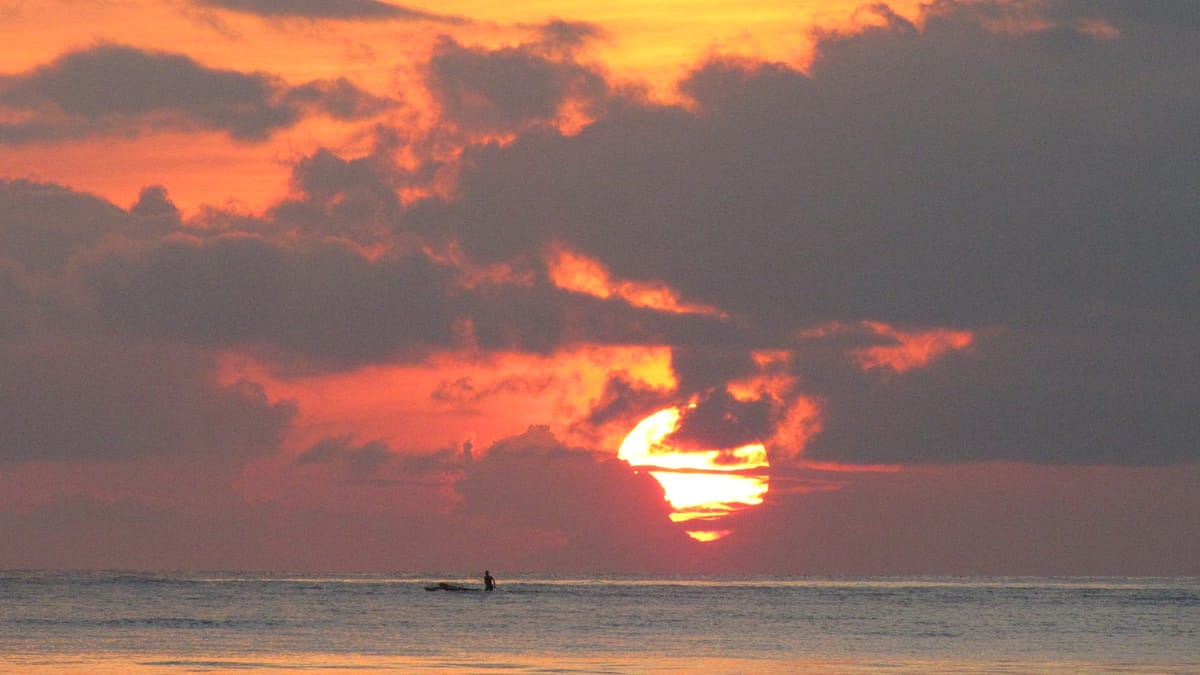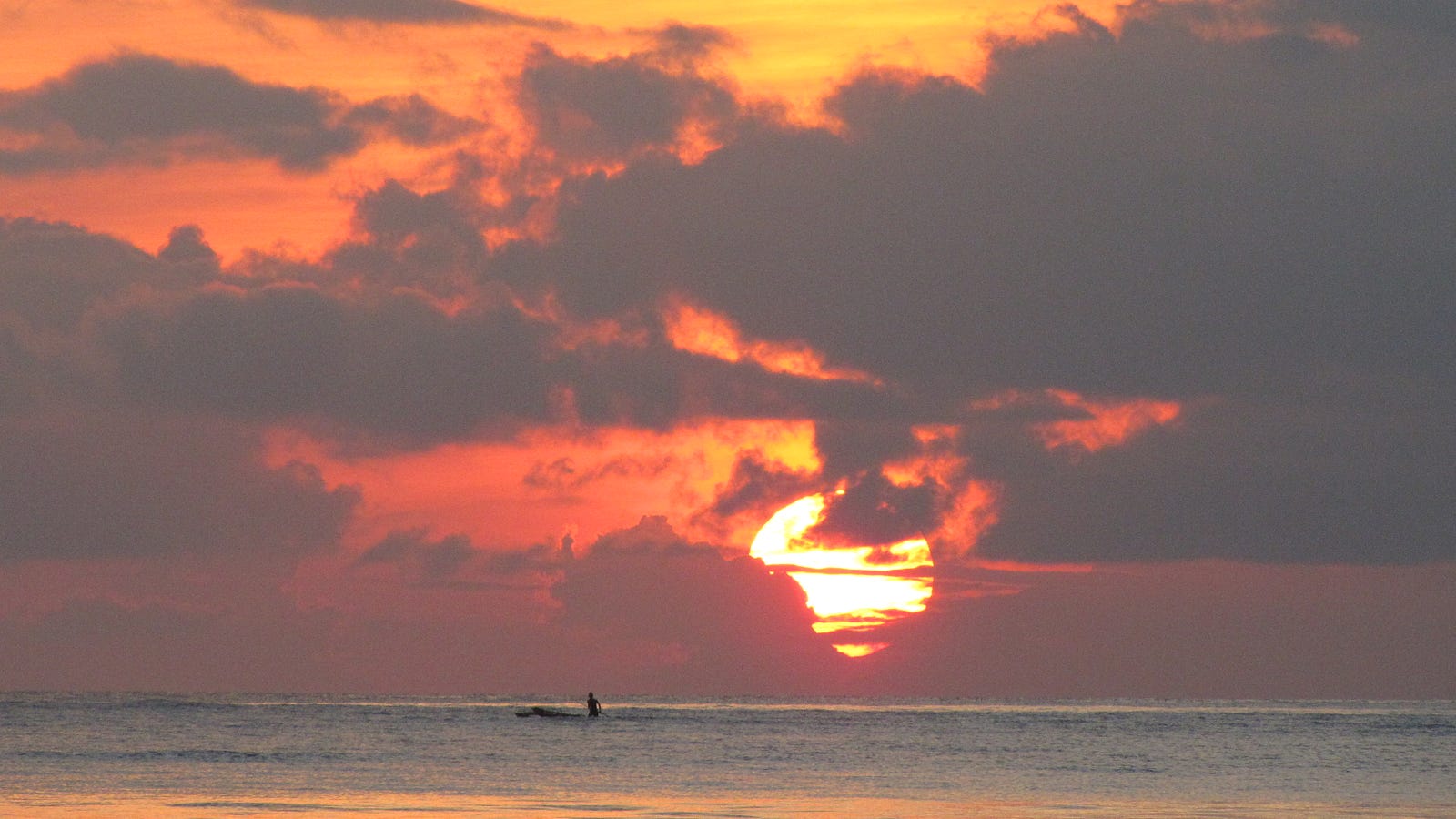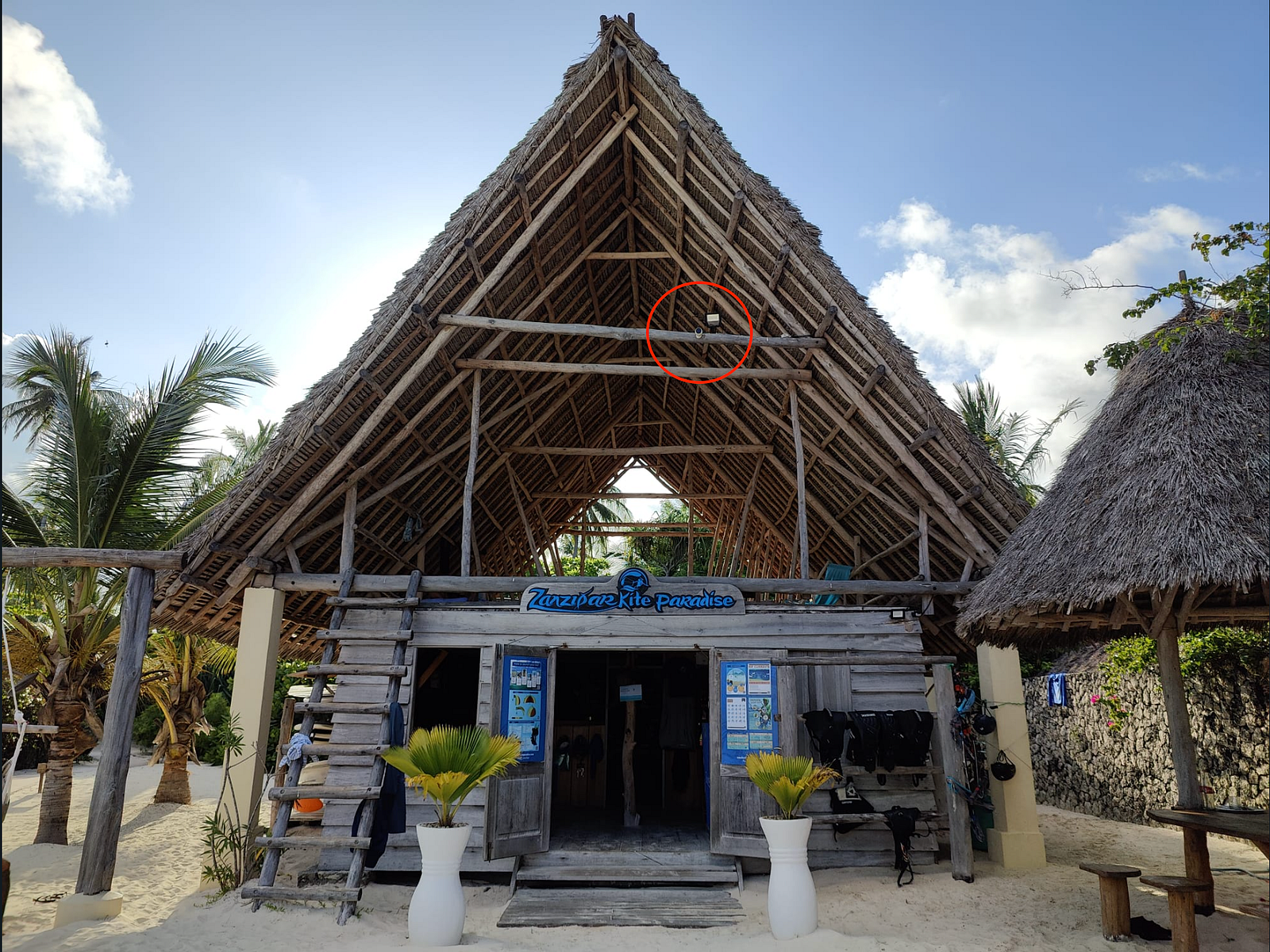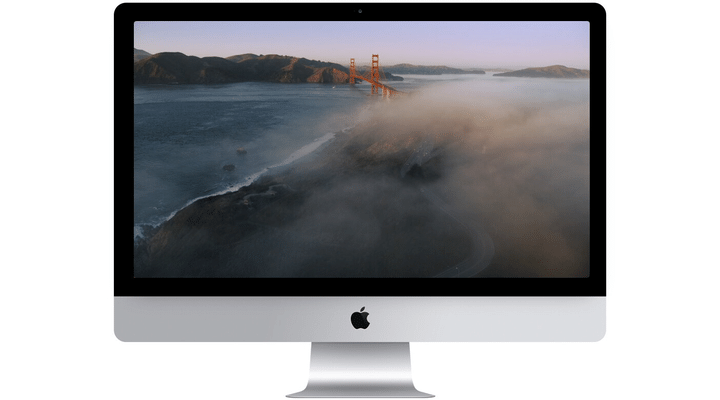Capturing every Zanzibar sunrise
A script is fetching sunrise time, triggering a camera in Zanzibar and uploading a timelapse to a server every day

TLDR: A script is fetching sunrise time, triggering a camera, uploading a timelapse to a server every day and embedding it into a website for public viewing.
See it live here! https://www.whitesandvillas.com/
Looking at the horizon in pixels
Although not portrayed in Metal Gear Solid 1, Zanzibar has some of the most beautiful sunrise I’ve ever seen. Why not setup a camera to capture them forever in a bucket of data and share them around you say? Yes.

What you’ll need:
- RTSP enabled Camera (I used a Unifi G3 Bullet)
- A small Linux server (Hetzner has great prices, I used a CX11– 2GB Ram @ EUR ˜4/month)
- An Amazon S3 Bucket
- (optional) A firewall to whitelist IPs and forward ports to the camera.
Skills required:
- SSH
- Bash
- AWS S3 / IAM
- Will to learn ffmpeg basics
- Time: about 4 hours.
The goal is to capture the sunrise every morning from your RTSP-powered camera and saving it into a file on a server to display on a website.
General approach
- Install a camera high-up, looking east
- Determine sunrise time
- Capture the sunrise in a video
- Serve the video publicly
- Schedule it daily
- Embed it in a website
Installing the camera
While on a trip to Zanzibar, I had an old G3 Bullet camera laying around.
I tested it before installing it high up — it was still working.

Found a great spot next to a floodlight with easy access to electricity. Thank you Zanzibar Kite Paradise!

After it was installed, I was able to access it from my local network to activate RTSP streaming.

Next up, I had to create a local Firewall rule to allow TCP connections to the camera and forward incoming request for port 7441 to it.
Testing the stream in VLC from a distant computer worked! Now anybody with the correct URL can stream it continously (at the expense of african bandwith, which can be quite expensive. I’ll make another article about I went around this with Restreamer).
Watch it live here: https://www.zanzibarkiteparadise.com/webcam
Now let’s add some automation to capture the sunrise daily into a video file.
Rent a server!
We don’t want to run anything of our machine, do we? Better rent a small linux server. I used HETZNER which had exactly what I needed: a shared vCPU, 2 GB Ram and 20GB of disk space for the small price of EUR ˜4/month. It is located in Europe.
Determining the sunrise time
Since sunrise times change daily, I needed a way to dynamically determine the correct time each day.
I used the public Sunrise-Sunset API to fetch the sunrise time.
A simple bash script (initiate_sunrise.sh) will fetch the day’s optimal time to trigger the automation (ffmpeg_capture_script.sh).
#!/bin/bash
# Filename: initiate_sunrise.sh
# Location for Zanzibar
LAT="-6.1357"
LNG="39.3621"
# Fetch sunrise time for Zanzibar from the API
RESPONSE=$(curl -s "https://api.sunrisesunset.io/json?lat=$LAT&lng=$LNG")
SUNRISE=$(echo $RESPONSE | jq -r '.results.sunrise')
## SUNRISE returns = 06:29
# Starts the video capturing script at sunrise
echo "$HOME/ffmpeg_capture_script.sh" | at $SUNRISENote: My server is in Europe but the sunrise api is returning data in EAT (UTC+3), so a small correction was needed to adjust the sunrise time to CET.
Video capturing script
Who has time to watch a 20min sunrise video? Instead, let’s make a 20 second timelapse.
Using a bash script, we will use ffmpeg to read the camera stream and screenshot it every 5s for 20min.
#!/bin/bash
# Filename: ffmpeg_capture_script.sh
# Cam RTSP URL
CAM_URL="<public RTSP URL>"
# Capture images for 20 minutes
ffmpeg -t 00:20:00 -i $CAM_URL -vf fps=1/5 "$SAVE_PATH/img_%03d.jpg"Bingo! I was in possession of a bunch of images. Now let’s create a timelapse.

ffmpeg can stitch pictures together to create a video. I will spare you the parameter explanation but there is a great explanation on this article by Rahul Sekhar.
# Create A 20-second video at 30 fps requires 600 frames (30 fps * 20 s)
ffmpeg -framerate 30 -pattern_type glob -i "/*.jpg" -c:v libx264 -pix_fmt yuv420p -r 30 -vframes 600 "/timelapse.mp4"Et voila! This script outputs a timelapse.mp4 file.
Time to upload it somewhere public, so that a website can embed it.
Serve the video
What better place to host the video file than an AWS S3 Bucket? It has a CLI which makes it very easy to setup.
#!/bin/bash
# Upload to S3
aws s3 cp "timelapse.mp4" "s3://<BUCKET_NAME>/timelapse.mp4"To make sure the server had the correct AWS rights to upload the file to the S3 Bucket, I followed this article.
I can now access the video from it’s public URL in the browser! Now let’s make sure the script runs daily.
Schedule a daily script
Using cron on the server, I can automatically run the script every day
# crontab -e
0 1 * * * $HOME/initiate_sunrise.shThis command runs the script at 1:00 AM every day of the month, every month.
Et Voila!
Next steps
- Make a “sunrise” frame with a raspberry pi, showing today’s sunrise in a beautiful and fashionable way.

- Make a reverse-timelapse: a 1 hour slow video of the sunrise that will serve as an Aerial background, similar to Apple’s Sonoma moving backgrounds.

And this is how I’m capturing all Zanzibar sunrises in an S3 bucket.
Thank you for reading!